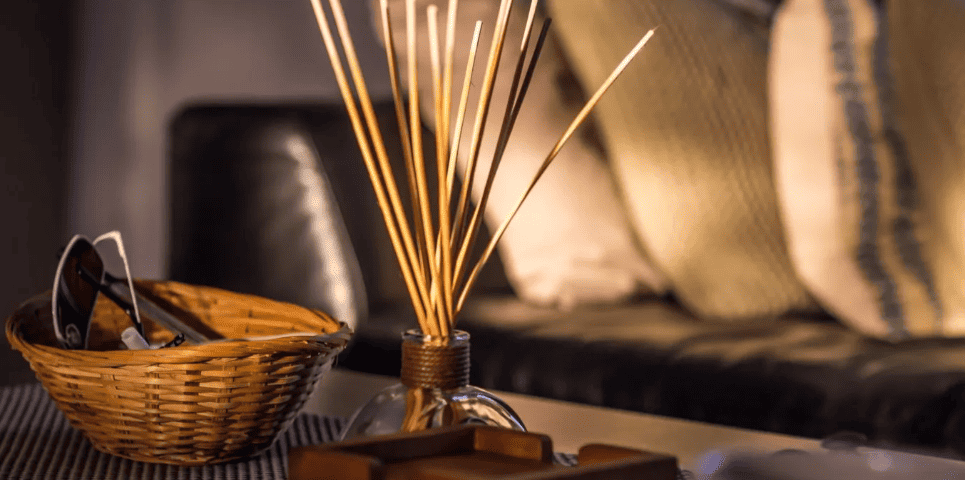The sense of smell, often underrated in comparison to sight or hearing, plays a pivotal role in our day-to-day lives.
Scents have the ability to transport us to a different time or place, evoke powerful emotions, and even influence our behavior. From the aroma of freshly brewed coffee that signals the start of a new day, to the comforting smell of a loved one’s cologne or perfume, our olfactory system is continuously processing information and creating associations.

In the context of home and living spaces, scents can dramatically alter our perception of a room. They can make a large, cavernous space feel intimate and cozy or turn a small room into an expansive oasis. Understanding the role of perfumes and fragrances in crafting such experiences can provide us with the tools to design living spaces that not only look good but feel good too. White flowers perfume can make them smell great.
Historical Significance of Fragrance in Homes
To grasp the impact of scents in the modern home, it’s essential to glance back in time. Historically, fragrances have always held a significant place in households. Ancient civilizations like the Egyptians, Greeks, and Romans used aromatic resins, herbs, and oils during ceremonies, rituals, and in daily life. These were not just to mask unpleasant odors but to create an atmosphere of luxury, purity, or spirituality.
Throughout the ages, the uses and sources of home fragrances evolved.
In the Middle Ages, dried herbs and flowers, like lavender or rose, were strewn across floors, serving a dual purpose: emitting pleasant odors and repelling pests. Fast forward to the Victorian era, and potpourri became popular, a mix of dried petals and spices, often placed in decorative bowls or sachets to subtly perfume a room.
Today, the market offers a plethora of options, from scented candles to diffusers, sprays, and even electronically-operated scent machines, showing just how intrinsic fragrances have become in our quest for a comforting home.
Choosing the Right Scent for Your Space
Every space and individual has unique needs when it comes to fragrance. What works wonderfully in a bedroom might feel out of place in a kitchen. Therefore, understanding the nuances of different fragrances can help in making an informed choice.
• Citrus and Fruity Fragrances: Often invigorating and refreshing, these scents are perfect for areas like the kitchen or a home office. Think lemon, orange, or grapefruit, which can uplift the spirit and provide a burst of energy.
• Woody and Earthy Tones: Scents like sandalwood, cedar, and vetiver add a grounded feeling to a room. They’re perfect for larger living areas or spaces where relaxation is the key, like a reading nook.
• Floral and Sweet Notes: Lavender, rose, or vanilla can add a touch of sweetness and calm to spaces. They are often preferred in bedrooms or bathrooms for their soothing properties.
Remember, it’s always a good idea to test scents in small quantities first, to ensure they blend well with the room’s ambiance and don’t overpower the space.
Techniques for Dispersing Fragrances While choosing a fragrance is crucial, equally important is deciding how to disperse it. The method can significantly influence the intensity and longevity of the scent.
• Scented Candles: Apart from their aromatic properties, candles add a visual element of warmth and coziness. They are versatile and come in a range of fragrances and sizes.
• Diffusers: Either reed diffusers or electronic ones, they provide a constant stream of fragrance. Especially suitable for larger spaces or areas with high foot traffic.
• Room Sprays: Ideal for an instant burst of freshness. They are portable and can be used as and when required.
• Scented Sachets: Best for small spaces like drawers, wardrobes, or even cars. They release a subtle aroma over time.
• Essential Oils: Used with a carrier oil in burners or diffusers, they are natural and can have therapeutic properties.
The Psychological Effects of Scents
Beyond aesthetics, scents in our homes can have psychological effects. Numerous studies have shown how certain fragrances can influence mood, stress levels, sleep quality, and even cognitive function.
For instance, lavender is renowned for its relaxing properties and is believed to reduce anxiety and improve sleep. On the other hand, peppermint or citrus scents can enhance alertness and improve concentration. By thoughtfully selecting and incorporating these fragrances into our living spaces, we can foster environments that not only smell good but also promote well-being and health.
Balancing Aesthetics and Olfactory Pleasure
As we journey towards creating a cozy living space, it’s essential to strike a balance. While the primary objective is to introduce delightful fragrances, the aesthetics of the scent-dispersing tools also play a role. A beautifully crafted ceramic diffuser or an artisanal scented candle can serve as a decor piece, marrying form and function.
In conclusion, the role of perfumes in crafting cozy living spaces is undeniable. From their historical significance to their modern-day applications, fragrances have the power to transform our homes into sanctuaries of comfort and delight. By understanding the nuances of different scents and their effects, we can curate experiences that cater to our senses, both olfactory and visual, making our homes truly an extension of our personalities.
